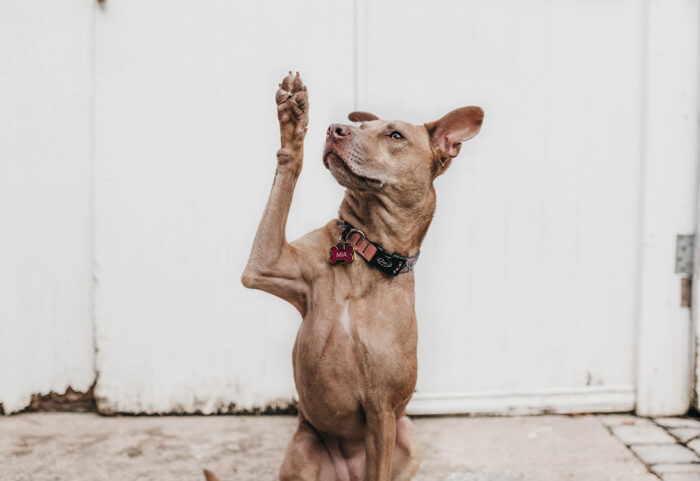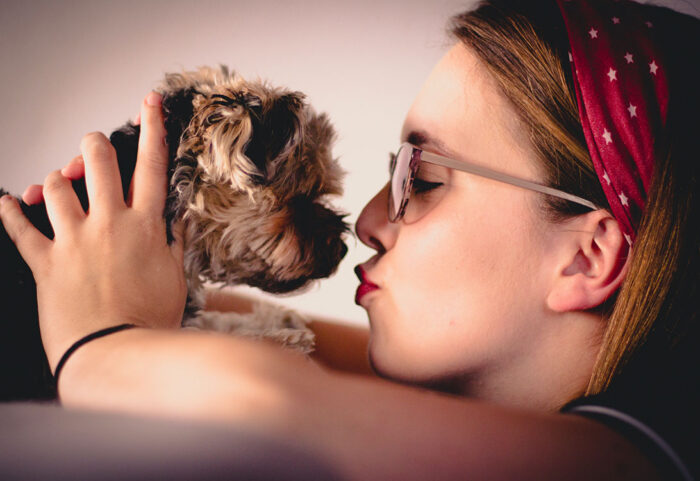How to train your dog to get used to seeing people wearing masks
The recent surge in people wearing masks has required an adjustment period for us all, but what about your dog? How has your canine companion reacted to seeing so many people with their mouths and noses covered? Have you noticed that your dog is more on-guard or cautious while on walks? Or, have they barked at family members or close friends because they were unable to recognize them? For many dogs, the transition to wearing masks was a sudden change that came without warning. It’s crucial that pet owners communicate this new normal to their pups through training. That’s why you should know how to train your dog to get used to seeing people wearing masks.
Desensitizing your dog to people wearing face-coverings and masks is a relatively simple process. These five steps will get you started.
1. Introduce the mask
Hold the mask in your hand and allow your dog to sniff it a few times. They might not realize that a face covering is something a person wears, rather than a feature of their face. This step helps them separate the mask from the person behind it. Give them a lot of praise and a few treats, so they associate the mask with good things.
2. Let your dog watch you put on the mask
As you put on your mask, make sure your dog is paying attention. Talk to your dog the entire time to make sure they’re recognizing that it’s you behind the face covering. Once you have the mask on, give lots of praise and treats to reassure them. Hearing your voice without seeing your face might make your pup nervous, but your positive attitude can help build their confidence.
3. While wearing the mask, explore different reward cues
Dogs are sensitive to body language and silent forms of language. Because a mask covers half of your face, it takes away a significant method of communication for your dog. Usually, pups look to their owners’ faces for smiles or other signs of reassurance.
While wearing a mask, use different ways to convey praise to your dog. Examples of these alternate methods are touch or verbal praise. You might find that your dog can understand more subtle facial cues, like “happy” and “angry” expressions through your eyes. Take time to see what kind of praise your pet prefers, so you can be prepared to take on the world together.
4. Bring in a helper for more variety
Once your dog is used to you wearing a mask, it’s time to expand their horizons safely. Ask a friend or family member to come over for a safe, socially-distanced training session with your dog. Let your pup play with the other person for a little while; then, have your friend repeat the first two training steps. Instruct them to introduce their mask to your dog, and then put it on. You can repeat this step with several different people, so your dog can learn from a variety of experiences.
5. Explore public spaces with your dog in moderation
The final step of training your dog to get them used to seeing people with masks is to test your training in public. If you live in a city where there is a lot of foot traffic, take your dog for a walk and observe how they react to seeing so many people wearing masks. You can even bring your dog to pet stores where they’ll encounter different people with face coverings in a contained space. Make sure to continue to praise and reassure your dog while you test the limits of their training.
Pay attention to your pup’s reactions to all the different stimuli. If they start to look stressed or aggressive, immediately remove them from the situation and let them calm down before repeating the exercise.
Helping your dog feel more comfortable as the world around them changes is one way to strengthen the bond between you and your pet. It helps build confidence and lets them know that they can trust you in new situations. Now that you know how to train your dog to get used to people wearing masks, you can feel comfortable that whatever comes next for you and your pup, you’ll be prepared to handle it together.


